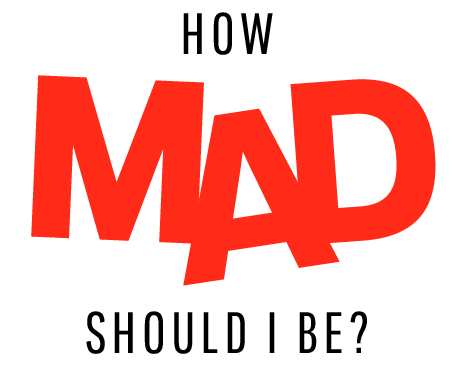

There’s so much to get mad about these days that it can be hard to know where to throw your outrage. On Twitter? To your senator? We’ve devised a handy rage calculator to help you determine the appropriate amount of outrage to express on social media.
Get out your TI-89 outrage calculators, because it’s time to calibrate the proper amount of emotion to expend on another instance of Hollywood whitewashing. On the docket is Annihilation, a trippy, LSD-infused sci-fi film by Ex Machina’s Alex Garland starring Natalie Portman as a biologist exploring a top-secret zone called Area X. The movie is an adaptation of a Jeff VanderMeer book of the same title, the first part of the Southern Reach Trilogy.
The film diverges from the books in several ways. In the books, Portman’s character is known first as “the biologist” and then goes by a nickname, “Ghost Bird”; in the movie, she goes by Lena. But the more significant departure for our purposes is that in the second book, Authority, VanderMeer describes her character as being of Asian descent. (Portman is white). Furthermore, another character, known simply as “the psychologist” (and played by Jennifer Jason Leigh in the movie), is described as half–Native American, half-white. (Ditto, Jennifer Jason Leigh). Garland and the actors have said that the whitewashing wasn’t intentional, and that they didn’t realize the characters weren’t written as white. But does this explanation hold up? Well, hold onto your angry hats, because we’re crossing into the Shimmer to find out.
All right, so is it fair to call this whitewashing, or is this an Iron Fist situation?
While many terms — whitewashing, white-savior complex, etc. — have gotten conflated over the past couple of years, this is a clear-cut case of whitewashing: The characters in the book are not white, but the actors who play them in the adaptation are. Here’s the relevant portion of the text from Authority, the second book of the trilogy, where another character known as John Rodriguez, a.k.a. Control, describes the biologist as follows:
The biologist’s hair had been long and dark brown, almost black, before they’d shaved it off. She had dark hair, thick eyebrows, green eyes, a slight, slightly off-center nose (broken once, falling on rocks), and high cheekbones that spoke to the strong Asian heritage on one side of her family.
Later in the same book, he says this about the psychologist:
No real hints of the personal, no pictures of the director with her Native American mother, her white father – or with anyone who might matter in her life.
While you could argue these descriptions fall into another common trope of dystopia narratives — sometimes called “But Not Too Foreign” — where characters in sci-fi or futuristic situations are often mixed race, it’s explicit that they are not written as white.
So what was writer-director Alex Garland’s explanation?
He says he simply didn’t know. He released a well-crafted statement that read:
This is an awkward problem for me, because I think whitewashing is a serious and real issue, and I fully support the groups drawing attention to it. But the characters in the novel I read and adapted were not given names or ethnicities. I cast the film reacting only to the actors I met in the casting process, or actors I had worked with before. There was no studio pressure to cast white. The casting choices were entirely mine. As a middle-aged white man, I can believe I might at times be guilty of unconscious racism, in the way that potentially we all are. But there was nothing cynical or conspiratorial about the way I cast this movie.
Portman also said something similar during an edited on-camera interview with Yahoo! When asked the question, she said that it’s the first she’d heard of the whitewashing allegations. She acknowledges that it sounds “problematic” and delivers a poised response: “We need more representation of Asians on film, of Hispanics on film, of blacks on film, women and particularly women of color, Native Americans — I mean, we just don’t have enough representation.”
Okay, do you buy that?
Well, there’s a few things to unpack here, so let’s start with Garland’s claim that he didn’t know. (I think it’s fair to say that this decision is on him, in this case.) Garland told Nerdist that he adapted the first book before the rest of the trilogy came out, and that it was a “really weird process” that involved discussions with VanderMeer, but the nature and extent of those conversations is unclear. All we can do is speculate on how much people knew and when, which is inevitably a losing game, and distracts us from the fact that the people who were erased don’t have much of a say in their own disappearance.
But let’s follow his reasoning to its logical end. VanderMeer presents Annihilation as a journal the biologist left behind in Area X, and there’s no mention of her ethnicity (there’s no like, Korean mom making her soup), so it’s fair to say that there’s no reason Garland would have known from reading that book. By nature, the book is an internalized and foreclosed experience, limited to the biologist’s perspective, whereas the film presents a much more streamlined narrative and bird’s-eye view of what’s happening that extends well beyond the text of Annihilation. So the question is whether Garland really didn’t know about the narrative arcs of the second and third books.
It’s questionable, because many of the film’s plot points indicate that, even if Garland had begun adapting the film after the first book, he knew the general arc. The film begins where Authority does, with Lena (the biologist) back in the Southern Reach facilities, being detained and questioned. There are other extremely specific — and extremely spoiler-y — details from the other books that make up the spine of film: for instance, that the psychologist Dr. Ventriss (Leigh) is dying of cancer; that she’s actually the director of the Southern Reach; that this whole Area X business possibly started when a comet hit the lighthouse; and that there are aliens that can create human clones that they send out into the world.
That’s a lot of similarities!
Indeed. The similarities seem more than incidental and indicate that the conversations between Garland and VanderMeer went well beyond the first book. If so, then, it’s fair to ask whether the question of race and ethnicity ever came up. (It’s here, in these banal conversations about “craft,” that these other political dynamics come into play.) While VanderMeer has been enthusiastic about the adaptation, he has sidestepped the question of whitewashing. In response to the whitewashing question, he told Syfy Wire:
I think that as the process of making the movie went along, as they became aware of books two and three, they kind of took that into account in the casting, but really that’s a question for Alex I think.
What does that mean?
Your guess is as good as ours. This comment indicates there was a problem that Garland recognized and tried to address retroactively. It also gestures to another way in which the film has been presented: That it is a win for diverse casting, because it’s a predominantly female cast with two actresses of color, Tessa Thompson as a physicist named Josie Radek and Gina Rodriguez as a medic named Anya Thorensen, in prominent roles.
This creates a familiar dynamic in cases of whitewashing, where people of color are pitted against each other. There’s no reason why Garland couldn’t have cast Thompson and Rodriguez as well as cast the other characters true to their ethnic descriptions in the book. In these conversations around representation, Asian-Americans and Native Americans consistently get sidelined. (The list of recent grievances from The Martian to Pan to Doctor Strange to the unfortunate Johnny Depp movie is long and injurious.)
This gets to the larger point: These systems are exactly that, operating within the status quo unless decision-makers actively work against it. Talking about intention (sure, it’s good to know someone is not actively making racist casting choices) makes things more about your feelings — and is sort of beside the point.
Well, are there any actors who could have played those parts?
Sure! For Lena, there’s Olivia Munn, Maggie Q, Sandrine Holt, just to name a few. For Dr. Ventriss there’s Tanaya Beatty, Leah Jones, Alex Rice, and any number of actors who just haven’t gotten their big breaks. More interesting, though, is the fact that Sonoya Mizuno, a half-Japanese actress, is actually in the film. She appears briefly as a student of Portman’s in the beginning, and then appears — again, major spoiler alert — as a “humanoid” in the film’s thrilling final act. In that scene, she’s a psychedelic rubber monster with no mouth, literally miming Portman’s character.
Wait, wasn’t Sonoya in Garland’s first film, Ex Machina?
Good eye. Yes, this isn’t their first collaboration. Mizuno played the other robot on Oscar Isaac’s island: the one apparently programmed so she can’t speak English. Instead, she’s the silent, subservient sex-slave robot whose actions seem inscrutable/sad and not her own, whereas her white robot counterpart, played by Alicia Vikander, is the one gifted with consciousness and free will. The role mimics all kinds of uncomfortable stereotypes about docile Asian women and the availability of their bodies/services without doing much to subvert it. (All of this of course — again, spoiler alert for Ex Machina now — only gets worse when the Alicia Vikander robot peels off the skin of another decommissioned Asian robot to use as her own.)
Yikes! Should I watch Annihilation?
Sure! If you love being terrified by insidious structural racism and also aliens.




